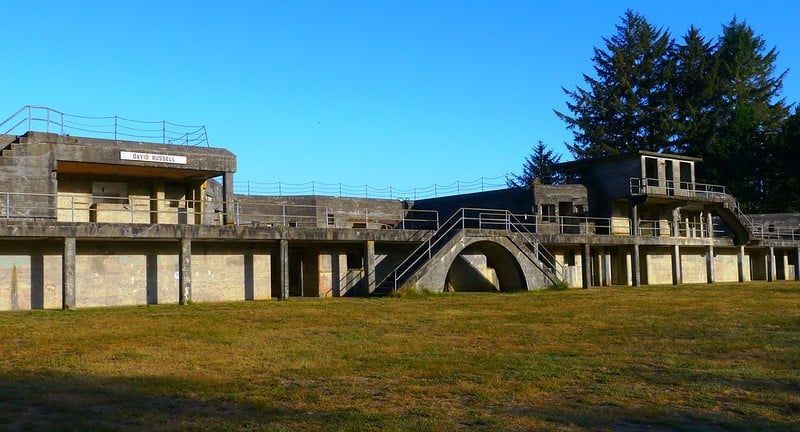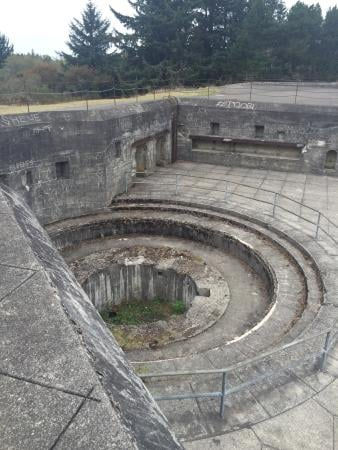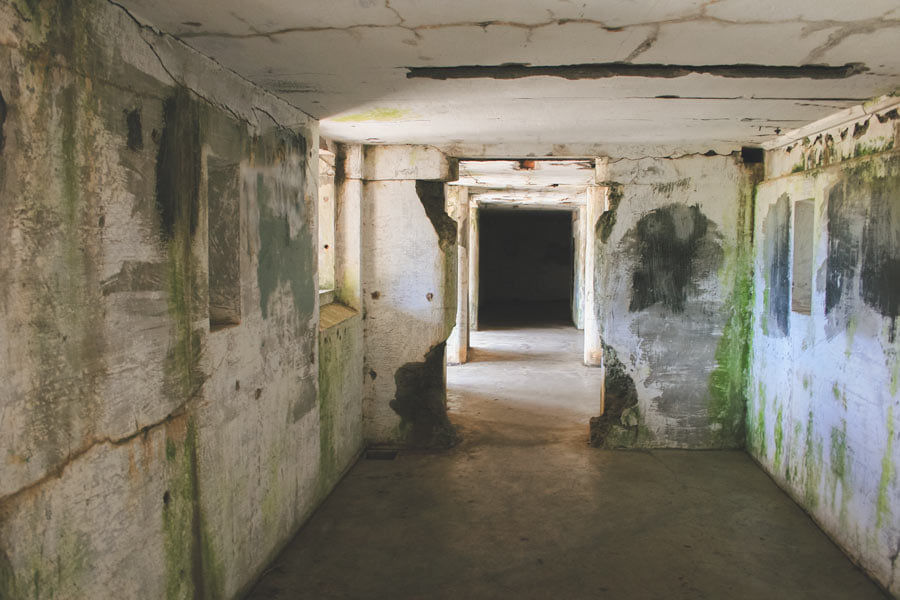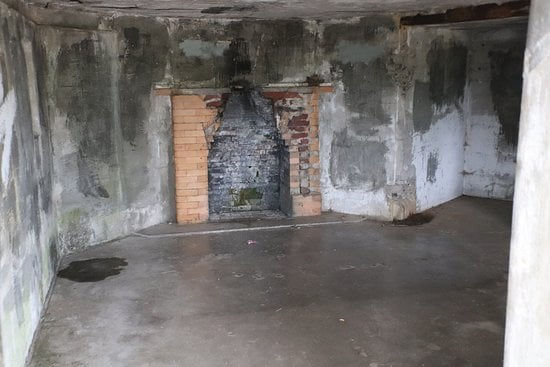Unveiling the Hidden Treasures of Historic Artillery Batteries Along the Majestic Columbia River
- Crazydsadventures

- Sep 24, 2023
- 8 min read
Updated: 4 days ago
The Columbia River, an essential waterway, has been pivotal in shaping the culture and history of the Pacific Northwest. Beyond its stunning landscapes, the river is home to remarkable historical sites, including historic artillery batteries that once protected this scenic corridor. These remnants offer a window into military strategy, national defense, and the evolution of warfare. In this post, we will examine the significance of these artillery batteries, their historical context, and what visitors can experience today.
The Significance of the Columbia River and the Historic Artillery Batteries
Spanning over 1,200 miles from the Rocky Mountains in Canada to the Pacific Ocean, the Columbia River has long served as a crucial artery for trade and transportation. Its strategic importance became evident during the 19th century, particularly amid the tensions of the American Civil War.
In response to fears of foreign invasion, the U.S. government fortified strategic points along the river. Artillery batteries were established to protect trade routes and military installations. For example, by the 1860s, there were over 50 coastal defense sites along the Pacific coast, highlighting the extensive efforts to secure vital areas like the Columbia River.
The Artillery Batteries: A Closer Look
In 1862, Cape Disappointment, on the Washington side of the Columbia, was armed with smoothbore cannons to protect the mouth of the Columbia River from enemies. Three years later, in 1865, Fort Stevens, complete with a moat and drawbridge, was established on the Oregon side. In 1875, Fort Canby came into existence to improve the defense of the Columbia. In 1896, Fort Columbia was built, and in 1897, Fort Stevens was enhanced. The mouth of the Columbia River was now protected with three forts.
Fort Stevens boasted eight concrete batteries – including mortars and long and short-range rifled guns. At Fort Stevens, Battery Mishler was the only underground battery, and it housed two 10" guns that were open to the sky. Each gun was mounted on a disappearing carriage, which hid the guns behind concrete and earthen walls when not being fired. Each weapon was also operated by teams of 35 men who worked efficiently as one unit to fire each massive gun.
Fort Stevens is a 4,300-acre park offering a variety of recreation adventures, including camping, beachcombing, a freshwater lake, trails, wildlife viewing, and a historic shipwreck, along with this military battery.


You can also enjoy year-round military displays at the military museum and information center. Visit the only Civil War era earthen fort on the west coast or explore the many turn-of-the-century, concrete artillery gun batteries. Underground tours are available during the summer of a gun battery that served as a World War II command center. For tour information, call the Friends of Old Fort Stevens at 503-861-2000.


The tour takes you past hallways, rooms, and interesting features, including a massive underground gun pit. The giant gun was mounted atop a large, thick concrete pillar. The underground Battery Mishler guided tours occur on weekends, and a ticket reservation is required, along with a daily parking permit.

Fort Stevens was decommissioned after World War II. By 1947, all of the guns had been removed, and much of the fort was turned over to the U.S. Army Corps of Engineers, who used the fort as their headquarters "for maintenance activities at the mouth of the Columbia River".
There's little left of Fort Canby today, but it's still interesting to poke around the remains. The fort was heavily armed during the Civil War to prevent Confederate gunboats from entering the Columbia River. Upgraded dramatically during WWII, the fort stood as the principal defender of the river. Although no shots were fired from Fort Canby, a Japanese submarine did manage to penetrate close enough to the Oregon side to fire on Fort Stephens in 1942.

The hike up to Fort Canby is located at the same parking lot as the Cape Disappointment Lighthouse Hike. Fort Canby Trail is to the right, and Cape Disappointment Lighthouse is to the left. The hike is about a mile out and back and is pretty steep. It does help that there are a couple of switchbacks to make it a little easier. There is also an upper parking lot close to the Fort and Interpretation center for wheelchair accessibility.


The Role of Artillery Batteries in Warfare
Artillery batteries were essential in warfare, serving as powerful defensive structures. They contained large cannons poised to deter aerial or maritime assaults. The strategic locations along the Columbia River allowed for efficient defense, controlling access to critical inland territories.
The presence of these batteries sent a clear message: the region was prepared and well-defended. They were not just military installations but represented a commitment to national security and resilience.
Evolution of Artillery Technology
Over the years, artillery technology underwent dramatic changes. The transition from muzzle-loading cannons to breech-loading artillery significantly impacted warfare tactics. Breech-loading guns improved loading times and accuracy, further enhancing the effectiveness of artillery batteries.
By World War I, advancements led to the introduction of even more complex artillery systems, showcasing how these batteries were essential to military operations and strategies.
I love the trees here, and there are several that look like this one.


The Lewis and Clark Interpretive Center stands high on the cliffs of Cape Disappointment State Park, 200 feet above the pounding Pacific surf. A series of mural-sized timeline panels guides visitors through the westward journey of the Lewis and Clark Expedition using sketches, paintings, photographs, and the words of Corps members themselves. The center also features a short film presentation, a gift shop, and a glassed-in observation deck with fabulous views of the river, headlands, and sea. Additional displays focus on local maritime and military history.


Exploring the Historic Artillery Batteries
For history enthusiasts, exploring the artillery batteries along the Columbia River is a captivating experience. Many sites now function as state parks or historical landmarks and offer a variety of educational programs and guided tours.
Battery Russell and Fort Stevens State Park
At Battery Russell and Fort Stevens State Park, guests can enjoy outdoor activities, including hiking trails with stunning views and various picnic areas. Informative signs and guided tours help visitors understand the historical context of these sites.
Fort Canby is within the Lewis and Clark National and State Historical Park. Built in 1864, it was one of the earliest forts in Washington and was named for Major General Edward Richard Canby. An essential base in pioneer days, overlooking the Columbia River entrance, it was deactivated in May of 1947.


Between 1896 and 1908, after a long period of neglect during which the fort and its armament had become obsolete, the Army completely renovated them. New barracks and other buildings were constructed, and two batteries (Batteries Harvey Allen and Elijah O'Flying) with a total of five rifled guns in concrete emplacements were installed.


In 1921, a new mortar battery, Battery Guenther, with four 12" mortars, was added, with the mortars coming from Battery Clark at Fort Stevens.


The fort remained in caretaker status from the end of World War I to February 21st, 1941, manned only by a sergeant and two enlisted men. The fort was reactivated in 1941, and in 1944 Battery 247 was added on McKenzie Head. In 1947, the fort was deactivated. Present surviving structures date from the World War II period.


Fort Canby was named initially Fort Cape Disappointment in 1864
Fort Columbia was originally called Post at Chinook Point, although there were no fortifications or gun batteries here before 1898. This was a sub-post of Fort Stevens in Oregon. The Columbia River was mined during WWI and WWII, controlled by a mine casemate located here on post. The mine casemate and several fire-control and observation stations still exist. Batteries here are Battery Jules Ord (1898 - 1917) (of which gun #3 was named initially Battery William Neary and now buried), Battery William Murphy (1900 - 1945), Battery 246 (1940's) never armed (present guns came from Fort McAndrew, Newfoundland in 1993), and Battery Frank Crenshaw (1900 - 1920). Became a state park in 1950.
Fort Columbia State Park is considered one of the most intact historic coastal defense sites in the U.S.



Two of the restored buildings are available for rent; these vacation houses are perfect for family reunions and retreats. If you're interested in renting, you can call (360) 642-3078. The area has some steep parts, but there are several different parking lots, so choose your parking lot wisely.


Constructed between 1896 and 1903, renovated during World War II, and decommissioned in 1947, this day-use park on Chinook Point near the mouth of the Columbia River will take you back to the early 20th Century.



Fort Columbia Historical State Park is a 618-acre, day-use historical park located within Lewis and Clark National and State Historical Park. The park sits along 6,400 feet of freshwater shoreline on the Columbia River. In addition to its historical significance, the area offers bird watching, miles of forested hiking trails, and secluded beaches.


You can walk around and explore officers' homes, artillery batteries, and two 6-inch, rapid-fire, World War II-era guns that are among six still in existence.



Fort Columbia is a ghost town in the sense that these days no one lives there, but luckily for all of us, it has been maintained. Along with the soldiers, there were also bakers, barbers, gardeners, and musicians stationed at the fort near the mouth of the Columbia River.



The fort was renovated during World War II, but not long after, it was declared surplus. Fort Columbia was officially decommissioned in 1947 and became the property of the state of Washington in 1950.

I love the tracks in the ceiling, and this is how they used to move artillery around within the battery.




The view of the ocean from here is excellent!!

Although often referred to as an early 20th-century site, the history of the land upon which Fort Columbia sits goes back much further. Chinook Point, the setting of this historic fort, is within the accustomed territory of the Chinook Indian Nation and is designated as a National Historic Landmark for its historical significance over three centuries. Meriwether Lewis and William Clark passed through this area as well on January 9th, 1806.
The Chinook Native Americans were first described ethnographically by the American explorers Lewis and Clark in 1805. Because American colonialism severely disrupted Chinook culture, ultimately removing the people to reservations, most information about traditional Chinook life is based on the records of these and other traders and explorers, together with what is known of neighboring groups.
The Cultural Impact of the Artillery Batteries
The artillery batteries along the Columbia River are not merely historical remnants but also key elements of the region's cultural identity. They remind us of those who defended the nation and the importance of historical preservation.
Community Engagement
Local communities actively engage with these historical sites. Through volunteer programs, educational events, and preservation efforts, residents connect with their history, ensuring that the stories of the past remain relevant for future generations.
Tourism and Economic Impact
These historic artillery batteries contribute significantly to the local economy. As more visitors explore these sites, they support local businesses and promote awareness of the region’s rich heritage. Tourism generated by these historical landmarks can lead to increased economic activity, with visitor spending benefiting surrounding communities substantially.
Discovering Hidden Treasures
The artillery batteries along the Columbia River are treasures waiting to be explored. They offer not just a chance to learn about military history but also an opportunity to appreciate the beauty of the river itself.
Whether you are a history lover, an outdoor adventurer, or seeking a unique outing, exploring these artillery sites is enriching. Walking through Fort Vancouver, Battery Russell, and Fort Stevens allows you to learn about the past while enjoying the stunning vistas of the Columbia River.
Prepare for a journey filled with discovery. As you visit these sites, curious stories and remarkable sights are sure to elevate your adventure along the majestic Columbia River.
Places to Stay:
You can show your appreciation with a virtual coffee if you have found value in my blog.
Do not forget to subscribe to get my monthly newsletter.
Some of the links found on my website are affiliate links. I earn from qualifying purchases as an Amazon Associate and an Expedia Associate. Through other links, I may also receive a small commission at no extra cost to you. Using them is a way of supporting me, helping me offset the cost of running this website, and ensuring that I can continue providing free content and resources.
I truly appreciate the support!






Comments